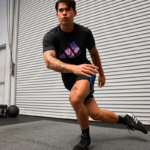
By Terrence Mahon
Boston Athletic Association High-Performance Coach & adidas Running Coach
Whether you are looking to complete your first half marathon or looking for a new personal best, the key to success is getting in the 3 Essential Workouts each week. This half marathon training plan will get you there.
Half Marathon: You Can Do It
Many runners shy away from the commitment to run a half marathon because they feel they just won’t have enough time in the week to complete all of the training. They assume that by training for a half marathon, they are signing up for days on end of more and more running. However, that need not be the case. If you follow the simple steps listed below, you can get the most out of your half marathon training plan while spending the least amount of time possible to reach your goals.

The reality is that our bodies can only handle so much stress from exercise before we either get injured or sick. Through many years of trial and error, coaches began to realize that the way forward was by pushing their athletes hard on one day and then allowing them to recover with 1-2 easy training or rest days before pushing them once again with another hard workout. This was the birth of the hard day/easy day formula and it is a training style that elite athletes around the world continue to follow to this day.
Along with the creation of “hard” days and “easy” days in training, we also came to understand that we need to train at more than just one or two different running paces during a training week. We need to integrate many different running speeds into our half marathon training plan to maximize both the aerobic and anaerobic energy systems regardless of the upcoming race distance. The integration of a multi-pace training regimen into the cycle helps to get us fitter faster and with fewer overall hard days in the week.
Here is how we do it…. The 3 Essential Workouts for Half Marathon Training
1. Multi-Pace Interval Training
Most experienced runners are familiar with interval training, but they still tend to fall into the trap of running the same paces within the workouts week in and week out. It may be an interval session done at 5k race pace or 10k race pace or all at half marathon pace, but it rarely incorporates more than 2 of those different paces within the same training session. The problem with these sessions is that after repeating them 2-3 times, the training effect on the body becomes less and less. What is needed to improve fitness gains is to increase both the speed (with shorter intervals) and the endurance (with longer/slower intervals) to fully develop one’s neuromuscular and cardiovascular systems. By adding in Multi-Pace Interval Training both within the training week and within the overall cycle, the body is constantly adapting to new stresses, and in return, it learns how to run both faster and farther with the same effort as before.
2. Specific Endurance Tempo Run
Part 2 of the program is the Specific Endurance Tempo Run. It is the one part in the training week where running at or close to the same pace is a good thing. The main reason for that is that the intensity level required to achieve this effort is the closest thing to a race (Specific Endurance) that you will experience until you actually step on the starting line. By learning how to maintain a constant pace, you will better learn how to distribute the appropriate energy and effort so that you can make it to the finish line. The two main goals for the tempo run are to adapt to being able to do more volume at the same pace (progressing in distance every 1-2 weeks) while also being able to make that pace feel easier and easier from the start of the 12-week program to the finish.

3. Progressive Long Run
The third Essential Workout for your half marathon training is the Progressive Long Run. Unlike most long runs where it is just about slowly logging the miles, the goal of this run is to teach you how to start slow and finish fast. By starting at an easy pace, you will save much-needed energy which will then be called upon in high demand as you increase the pace over the latter miles of the run. This is what the elite athletes call running “negative splits” and nearly every record from the 5k to the marathon has been achieved by starting slow and finishing faster throughout the race. Since there is less of a worry of hitting the proverbial “wall” in the half marathon distance, we can focus more on a high-quality long run. This run also serves as a great mental workout as it teaches you how to run your fastest while dealing with the most fatigue. If you can learn to do it in training, then it will become automatic in the race.
The final piece of the puzzle that helps to put this all together in a complete package is the introduction of Training Blocks. Block training is a system where you repeat a series of workouts over a cycle of a few weeks to allow you to reach a higher level of mastery in all the hard sessions. In the program that I have provided below, we have 3 distinct 3-week blocks that create the core of the program. Each 3-week block repeats the workouts that are listed in the first week of each cycle. The purpose of this routine is that when introducing new training, it normally takes 3 attempts at any workout to achieve the mastery and adaptations that we are looking for to make you run faster. After we achieve these performance gains, it is time to move on to the next training block and challenge you once again. Along with this change in the individual workouts from one cycle to the next, the overall degree of difficulty changes as well. Each cycle is slightly harder than the previous one so that we can push towards achieving maximum fitness just prior to the race. This push for both progressive loading and progressive intensity will reach a peak 8-9 days before the race and then we will taper it all back in the final week so that you are recovered and ready to perform your best on race day.
A Few Tips Before You get Started
This half marathon training plan is 12 weeks long. It starts off with a 2-week introduction to the program followed by 3 separate 3-week training blocks and finishes up with a 1-week taper/recovery phase leading into the race.
If possible, it is best to begin and end each training session with some stretching. The goal isn’t to become more flexible before you start running, it is just to warm up the muscles, tendons and joints before they have to do the real work. Active stretching before the run and static/isometric stretching post run are proven to be the best method for injury prevention and recovery.
When doing the sprints that are listed in the program, don’t try to go all out. You should focus on going fast, but be able to stay relaxed and smooth. Try to go faster, but not by working harder.
Feel free to substitute cross training days on easy run days when it makes sense. Ultimately, you get better at running by doing more running, but only if you can stay healthy and recover. Finding the balance between the two is the key to improving your race times.
The best training programs and performances are often wrecked by not paying attention to recovery. Your ability to train hard is governed mainly by your ability to recover. Following a healthy diet, staying hydrated, working on being flexible and, most importantly, getting plenty of sleep are the best things you can do to be a better runner.

Structure of the Half Marathon Training Plan
The Introduction Phase:
Take these first two weeks to bring yourself up to speed with a new running program. If you are starting from zero, then go with the lower end of the suggested training paces and volumes. There is plenty of time to get fit over the next 12 weeks. If you are a more advanced runner, then you can push the upper edges of the program or even add in a few more miles/kilometers to bring it in line with your normal training routine.
Training Block 1:
Review the program ahead of time so that you know what to plan for with your training week. Hill repeats can be done on grass or roads as long as the surface is smooth. Treadmills are also a good option for hill repeats. Choose an incline of between 4-6% at first and if that feels easy, then increase by 1-2% to find the appropriate challenge. Flat running on treadmills should be done at a 1% incline to account for reduced friction and the lack of wind resistance..
Training Block 2:
In this cycle, we bring in some faster running speeds that will go into your anaerobic training zone. The simple way to adjust paces is to increase your speed by 15 seconds per mile (8-10 seconds per kilometer) as you drop down in race pace from the half marathon to the 5k. So if your goal is an 8:00 per mile (5:00 per 1k) for the half marathon, then you would be 7:45 per mile (4:51 per 1k) for the 15k, 7:30 per mile (4:43 per 1k) for the 10k and 7:15 per mile (4:35 per 1k) for the 5k. .
Training Block 3:
This block will push you to your upper limits on all 3 Essential Workouts each week. As these next 9 workouts in your half marathon training plan to come are the most important in the entire program, you want to make sure to both precede and follow these days with easy running or cross training. Prepare yourself mentally for the success that lies ahead and you are much more likely to reach your goal. If you can’t see yourself doing it, then you certainly won’t. Begin the transformative process in your mind first and your body will follow.
Taper Phase:
Now is the time to back off on all of the hard work and allow time for your body to recover. Get plenty of rest, eat well and stay hydrated. Since you will be running less this week, take some extra time to stretch, foam roll or to get a massage. Don’t be surprised if you feel a little sluggish in the middle of the week. Your mind and body are just beginning to conserve energy for what lies ahead on race day. Once you get into the race, you will wake back up and come alive with fresh legs and lots of enthusiasm for the task ahead.
Good luck in your next half marathon!
About Terrence Mahon:

Terrence Mahon is one of the top coaches around the world for both middle & long distance running. He has produced numerous Olympians, world championship athletes, national record holders, national champions and some of the top-ranked athletes around the globe. He has coached number one-ranked athletes in the world in both the 800 meters and the marathon. He is currently the High-Performance Coach for the Boston Athletic Association. Prior to that, he was Lead Endurance Coach for UK Athletics. Terrence has been a long-standing adidas Coach & Brand Ambassador. He holds personal bests of 1:03:37 in the half marathon and 2:13:02 in the marathon.

***



